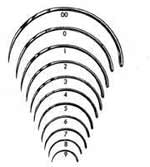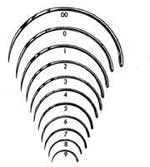Home » Surgical Instruments, Medical Surgical Supplies & Equipment » Training Patients On Self-Use of Fistula Needles » Training Patients On Self-Use of Fistula Needles
Training Patients On Self-Use of Fistula Needles

Fistula Needles, 1/2 Circle, Cutting Edge, #3
Retail Price: $12.50
Your Price: $9.38
 Unit: single
Unit: single

Fistula Needles, 1/2 Circle, Cutting Edge, #00
Retail Price: $14.38
Your Price: $10.79
 Unit: single
Unit: single

Fistula Needles, 1/2 Circle, Cutting Edge, #7
Retail Price: $12.50
Your Price: $9.38
 Unit: single
Unit: single
While medical professionals are well trained in the art of using fistula needles, patients that require specific types of self-treatment can also be educated to successfully use the necessary equipment at their home. Typically medical professionals will still be involved in any type of cannulation for intravenous purposes such as the use of intravenous drugs, blood transfusions, and intravenous hydration of patients that are acutely or chronically ill.
The most common use of self-cannulation in patients is for those that are on dialysis and have a mature fistula. A fistula is simply an artificial or surgically created passageway between two non connected body parts. For dialysis patients a fistula is often surgically created in the arm to allow easy access to the vein and artery and monitoring of the creatinine and urea in the blood. Often this is used during the end stages of renal failure and this specific type of surgical connection is called a cimino fistula. It is also used in the dialysis procedure and provides an access point for the needle that can be effectively used in home dialysis procedures.
Patients with this type of mature fistula, which is typically seen after approximately six months to one year of dialysis, may be able to complete their own self-cannulation if they are comfortable with the procedure. Typically a home health care nurse or a dialysis technician works with the patient until they are comfortable with the procedure under supervision. The benefit of home dialysis includes the patient feeling more in control of his or her own health and independence. It is also the perfect option for those that are working or have families at home that don't want to spend hours at the dialysis center during their busy day.
Hygiene is one of the most crucial aspects of using fistula needles that needs to be stressed with the patient. He or she must be prepared to wash both their hands as well as the area of the arm both above and below the fistula site. This wash needs to be completed with warm water and an approved antibacterial soap. In addition sterile procedures for handling the needle needs to be followed. This means touching only the plastic wings of the fistula needles and not the actual needles themselves. It also means avoiding touching the needle to any non-sterile surface including a table top, the skin or clothing. In the event that fistula needles make contact with any non-sterile surface they should be disposed of immediately.
Patients will need to work closely with the dialysis technician and their doctor to ensure they are using the correct size of fistula needles. Most adults will need a 15g needle size but this can vary between individuals. Needles are color coded on their wings to help patients and medical staff to immediately identify the size. The colored bevel index also helps in positioning the needle to enter the blood vessel correctly, which is at approximately a 25% angle. In addition the point of the needle needs to enter the skin first as this allows greater precision in positioning the needle in the blood vessel. The needles are designed to be oval in shape preventing any suction from building up between the tip of the needle and the lining of the blood vessel during dialysis. In addition a connector attached to the tubing end of fistula needles provides a very safe, secure and easy way to connect the needle to the tubing without additional pressure on the needle once in place.
Patients that use home dialysis or technicians that use fistula needles in clinical settings need to carefully monitor any pain or discomfort during the insertion and removal of the needles. Most patients that are taught in the correct procedure for self-cannulation are highly effective at the procedure in just a few weeks.














